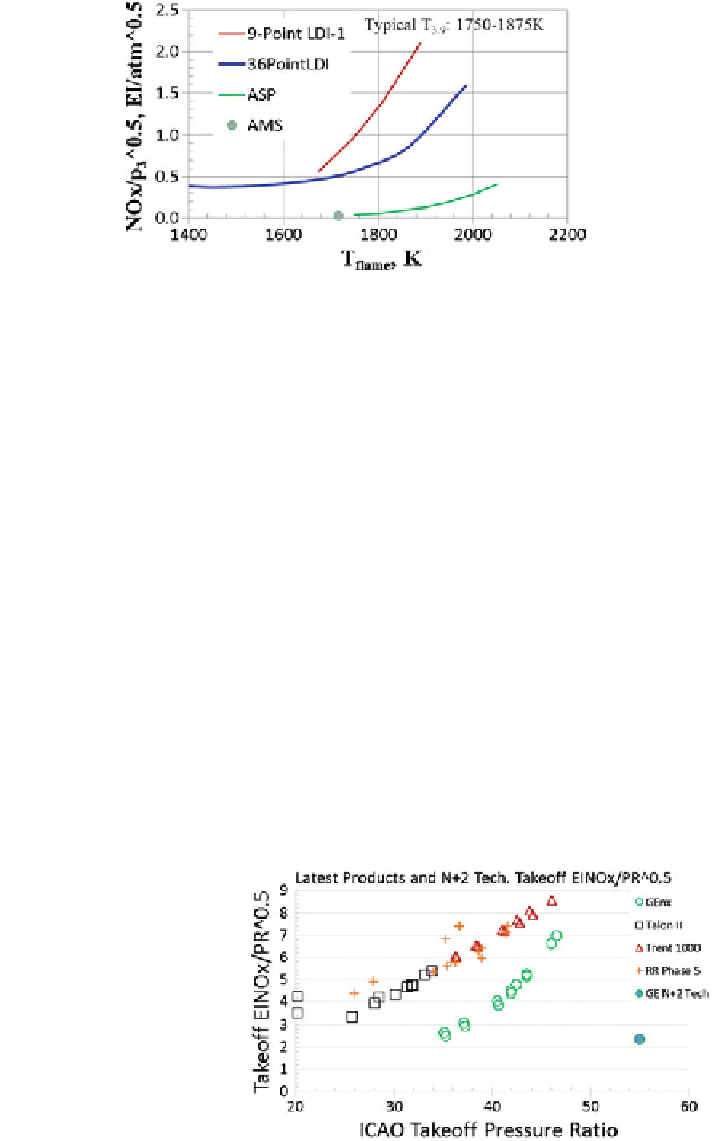Environmental Engineering Reference
In-Depth Information
Fig. 36 NO
x
entitlement (EINO
x
/P
0.5
) represented by an accelerating swirl passage mixer (ASP)
as a function of adiabatic
flame temperature can be compared with an advanced multi-swirlers
mixer (AMS) and LDI-1 from Mongia (
2011e
)
fl
mixer. Its minimum EINO
x
value along with the data of NASA LDI-1 and ASP
were pulled together in Fig. 20 of Mongia (
2011e
) to propose it as the current status
of the promising lean dome technologies. This
figure is reproduced here as Fig.
36
in order to facilitate comparison with the most recent products
takeoff NO
x
as
summarized in Fig.
37
. At least two comments are relevant here. First, we have
assumed that the pressure exponent of 0.5 is valid for comparing data from different
lean dome concepts, in addition to an assertion that it can be represented as a
function of average adiabatic
'
takeoff
EINO
x
data are presented as a function of SLSS (ICAO) takeoff pressure ratio and
therefore only indirect comparison can be made between Figs.
36
and
37
; we have
assumed that the pressure exponent of 0.5 for the products
fl
ame temperature. Second, the products
'
'
EINO
x
is reasonable.
The P
3
normalized NO
x
data of Fig.
37
compared to the earlier
figures (viz.
Figs.
13
and
27
) does not provide any additional insight but a means to make
comparison with rig data at different design conditions, namely Fig.
36
. As men-
tioned by the TAPS N + 2 technology team in Lee et al. (
2013
), their selected
con
guration was not necessarily the lowest NO
x
, one driven by other
Fig. 37 Takeoff EINO
x
/PR
0.5
of several rich-domes, GEnx
and GE N + 2 technology
versus takeoff pressure ratio
PR

Search WWH ::

Custom Search